This is an Eval Central archive copy, find the original at freshspectrum.com.
Good stories always have heroes, even data stories. So who is the hero in your story?
So technically, a story is just a sequence of events. And you can layout a sequence of events without the use of characters. But thinking of your stories, and telling them, through the eyes of characters (especially a good protagonist) can really elevate the quality.
So how do you do that with data stories? That’s what we’ll discuss in today’s post.
For a little extra context, a couple of weeks ago I put out a course waitlist wondering what my readers really wanted to learn related to data design. And out of all the topics I listed, data storytelling rose to the top. So as I dive down the rabbit hole that is storytelling, preparing for a course to be launched (perhaps in May?), I thought I would share some basic methods here on the blog.
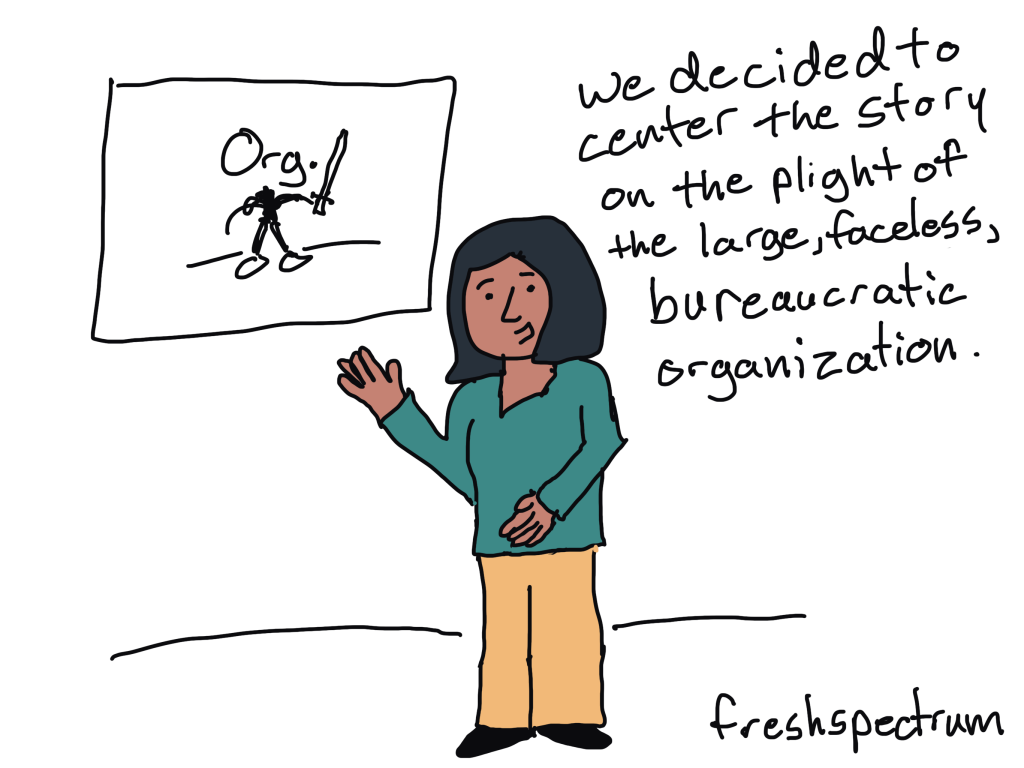
The Hero’s Journey and Us
The hero’s journey is a really common story template that has been adapted to meet all sorts of needs from literature to script writing to business planning. We won’t dive in too deep at this moment, but it does give us a good starting point for talking about the hero (a.k.a. our main protagonist).
Out of all the various character archetypes you could include in a story, a hero is almost certainly the most important.
But who is the hero in a story about a program’s performance? Is it the program? Is it the board or leadership? Is it a member of the program staff? Is it a funding recipient? Is it the ultimate beneficiary?
Honestly, you can center any of these as the hero of your stories. But some points of view will definitely give you more compelling stories than others.
Centering the Organization as the Hero [Don’t Do This]
For some reason I feel like this has become the default. Which is unfortunate.
Organization heroes make for pretty dull stories.
Let’s look at how the Department of Education’s Institute of Education Sciences centers itself in its web page copy and reports. Here is an example from the web page.

Driving Innovation through Research. IES invests in high-quality research that sparks innovative solutions to real-world challenges in education.
Who is the hero? Clearly it’s IES that’s doing the investing that is leading to innovation.
This kind of language gets continued on the “About Us” page. Look at the number of sentences that start with we.
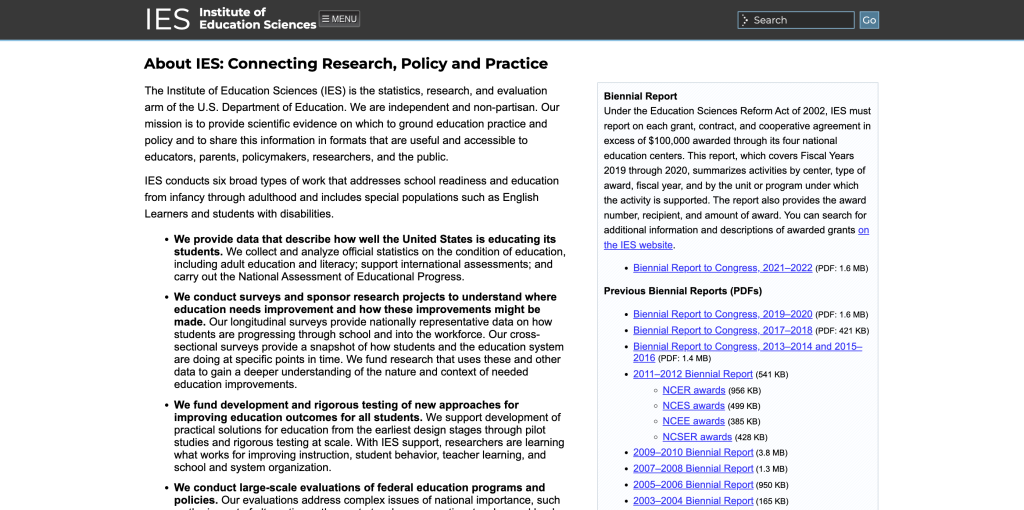
Okay, now let’s dive into their latest Biennial Report to Congress.
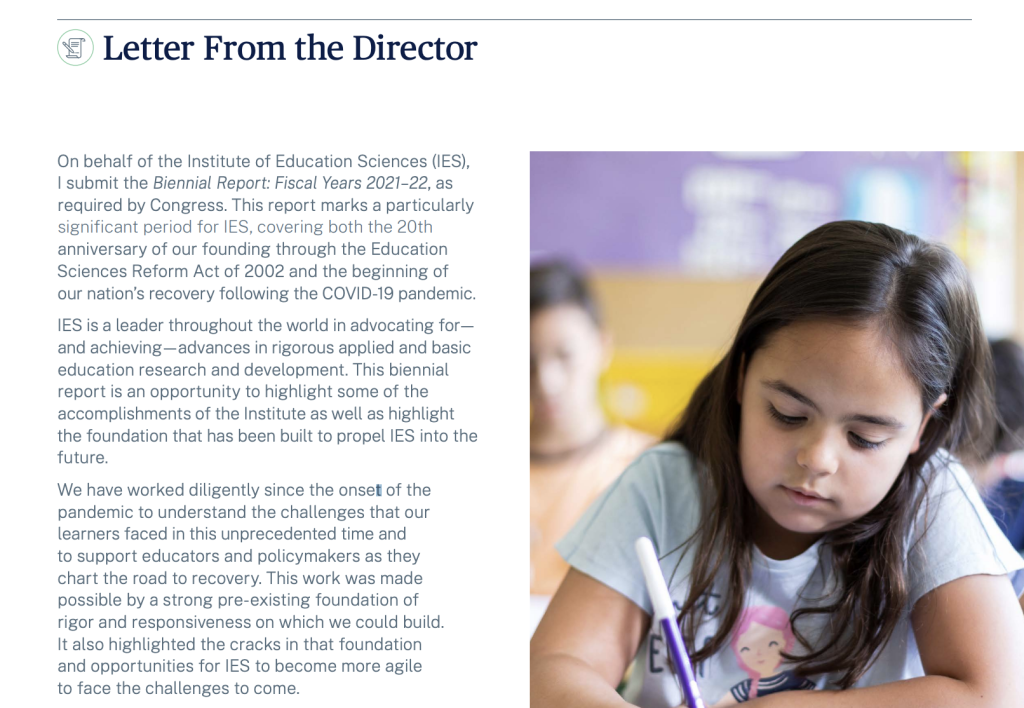
IES is a leader throughout the world in advocating for-and achieving-advances in rigorous applied and basic education research and development. This biennial report is an opportunity to highlight some of the accomplishments of the Institute as well as highlight the foundation that has been built to propel IES into the future.
Who is the hero? Clearly it’s the Institute.
This kind of centering becomes a habit that starts from the top and then permeates through an entire organization. It’s one of those “mindless centering of self” kind of things that we all tend to do.
Centering Beneficiaries and Direct Service Providers as Heroes [Consider This]
UNICEF offers us an alternative example in how to think about organizational storytelling.
Here is the current top of the “What we do” page.
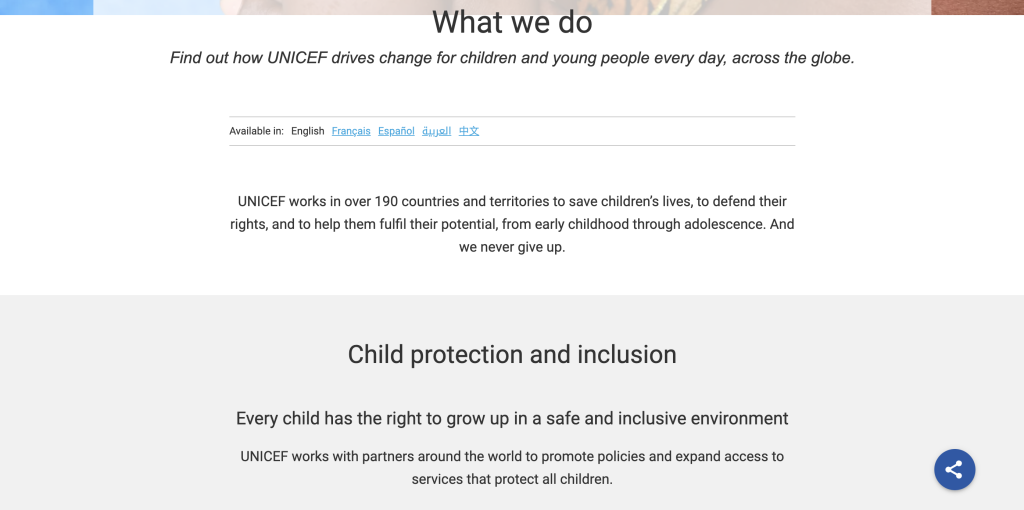
While the language does do some centering of the organization it quickly switches perspective. The text adds a new character, “children.”
By saying “Every child has the right to grow up in a safe and inclusive environment,” the child becomes the central figure (which then gets repeated throughout the page). UNICEF becomes the mentor, or guide, that supports the child’s journey.
Who is the hero? On the about page, I would suggest the hero is the child.
Perhaps you might think that’s a stretch. So let’s take a dive into one of UNICEF’s flagship reports. The State of the World’s Children 2023.
The first few stories center children.
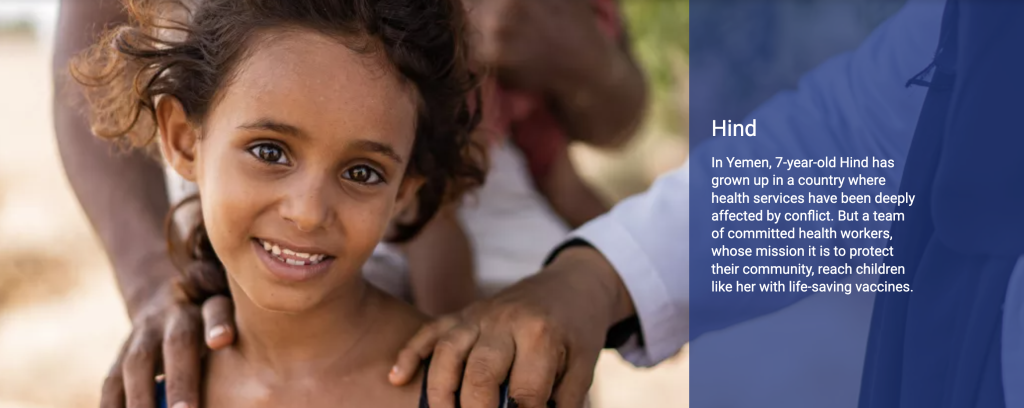
In Yemen, 7-year-old Hind has grown up in a country where health services have been deeply affected by conflict. But a team of committed health workers, whose mission it is to protect their community, reach children like her with life-saving vaccines.
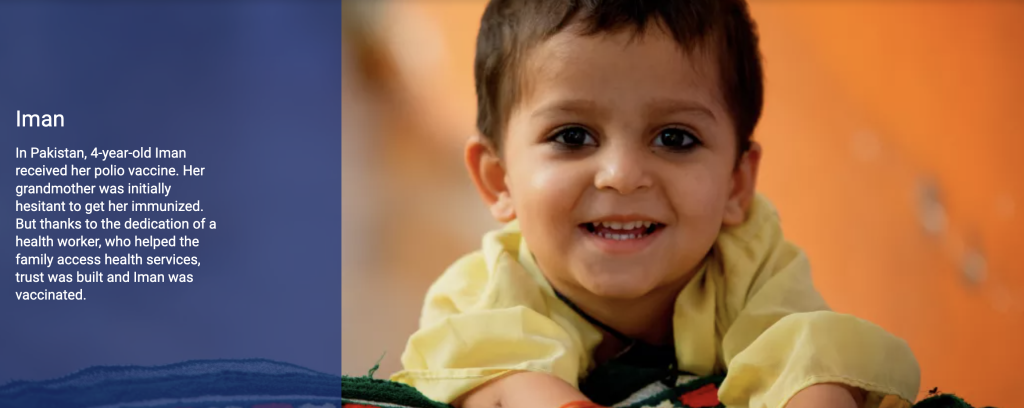
In Pakistan, 4-year-old Iman received her polio vaccine. Her grandmother was initially hesitant to get her immunized. But thanks to the dedication of a health worker, who helped the family access health services, trust was built and Iman was vaccinated.
Who is the hero? The Children.
These are stories that show each child’s journey towards getting vaccinated. Health workers are heroic figures that appear in these specific stories, but not as the central figure.
This approach changes as the report goes on (there are many stories included in this report). We move from centering children to centering health workers. And it becomes clear that the organization is not centering itself in any of these stories, we can only assume that they had some role in the background.
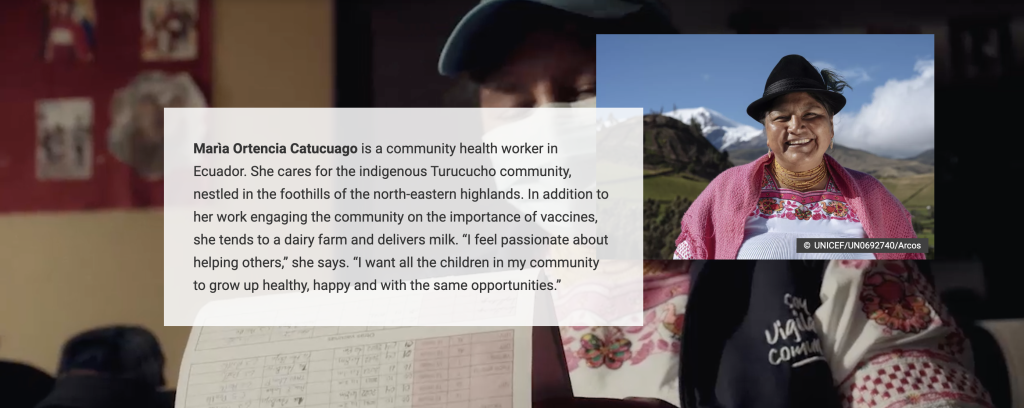
Marìa Ortencia Catucuago is a community health worker in Ecuador. She cares for the indigenous Turucucho community, nestled in the foothills of the north-eastern highlands. In addition to her work engaging the community on the importance of vaccines, she tends to a dairy farm and delivers milk. “I feel passionate about helping others,” she says. “I want all the children in my community to grow up healthy, happy and with the same opportunities.”
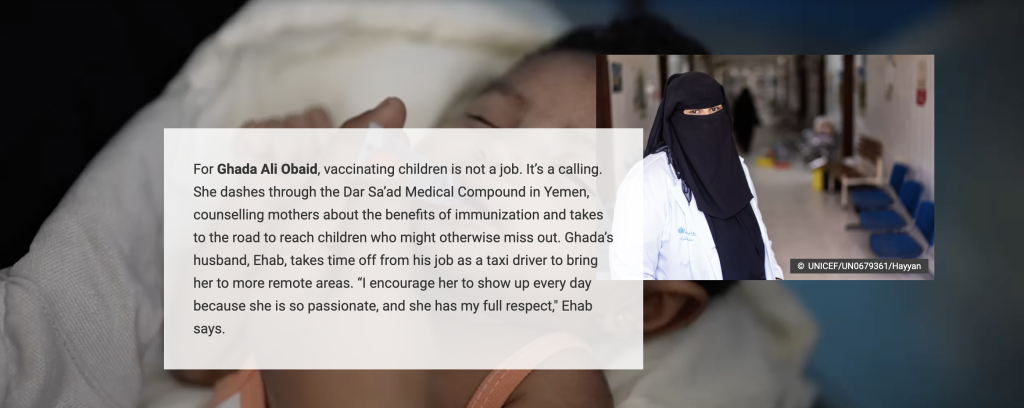
For Ghada Ali Obaid, vaccinating children is not a job. It’s a calling. She dashes through the Dar Sa’ad Medical Compound in Yemen, counselling mothers about the benefits of immunization and takes to the road to reach children who might otherwise miss out. Ghada’s husband, Ehab, takes time off from his job as a taxi driver to bring her to more remote areas. “I encourage her to show up every day because she is so passionate, and she has my full respect,” Ehab says.
Who is the Hero? The Health Workers
How will you apply this lesson to your own reporting stories?
Who do you center when you write a report?
How often do you treat an organization as if it were a person? Would it be better to center individual project staff members in some of your stories? Could you center some of the program’s direct beneficiaries?